This Dutch concrete villa is a calm symphony of interlocking rectangles

'This project actually came about because of Wallpaper*,' notes Australian-born, London-based architect Russell Jones, describing his client as 'very thorough'. Having bought the land, the client drew up a list of a dozen architects from around the world, including Jones, after he'd seen his brick apartment building in Notting Hill, west London, in our March 2006 issue. 'He liked the fact that I was very conscious of the use of natural materials.'
The site turned out to be a prime residential plot a few miles outside Eindhoven, set in a heavily forested, sandy landscape complete with maritime pines and large patches of white sand that locals use for sunbathing in the summer. The land was one of a tranche of residential plots owned by Dutch electronics giant Philips and sold off to senior management during the 1950s and 1960s to encourage them to move closer to its corporate HQ in Eindhoven. Several houses were built to the designs of Louis Christiaan Kalff, the company's polymathic design director, who oversaw the lighting for the Barcelona Pavilion, the Festival of Britain and the Philips Pavilion at Expo '58 in Brussels. Jones' client owned a low-built mid-century structure, stuffed with unique light fittings, in a perfect location on the wooded site.
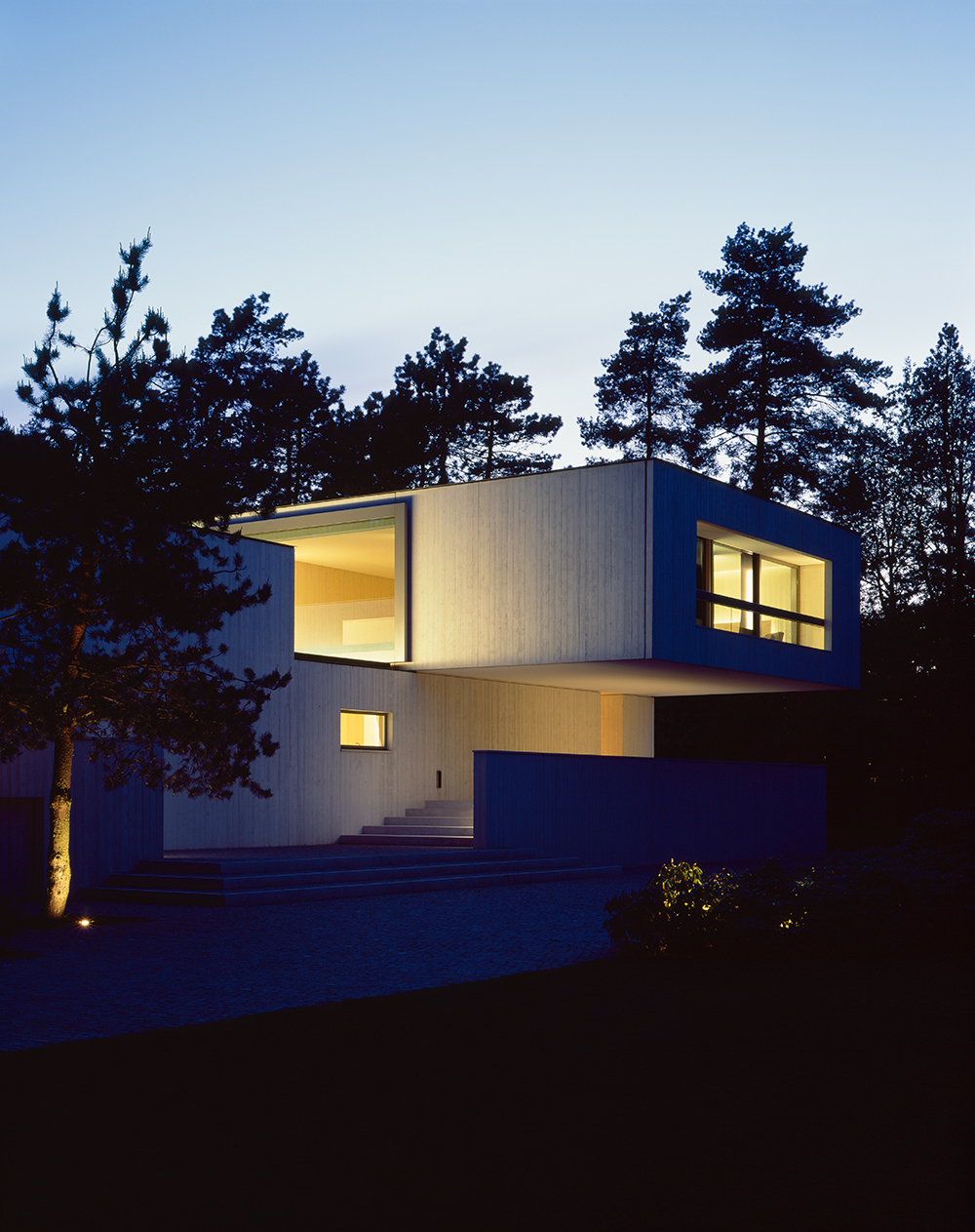
The entrance to Villa Waarle, near Eindhoven, steps up beneath a cantilevered ‘beam’ containing the bedrooms.
Despite his stature, Kalff 's involvement was no barrier to redevelopment. 'When I first went there, I thought it was a pretty damn good house,' says Jones. 'In the UK, it would certainly be listed.' Noting that several, better Kalffs existed, the only restriction the planners placed was the replacement structure should be of greater architectural merit.
Jones accepted the challenge. The brief was straightforward – modest, even – and called for a five-bedroom family home. The new house sits in the same south-facing orientation as the original, but Jones has taken advantage of the sandy site to excavate great chunks of new accommodation. As a result, Villa Waalre is uncommonly spacious. The house is arranged around a large ground floor living space, with two wings reaching south into the mature landscape – one contains the double-height kitchen and the other a study and enclosed terrace. Resting above these wings is a 'beam' containing the bedrooms, with the master suite placed centrally looking out over the garden via a long slender horizontal window and set-back balcony. In the basement is a 25m swimming pool, gym and photography studio, while to the west, a 50m tunnel has been carved out of the dunes to accommodate cars and serve as a second access route to the house.
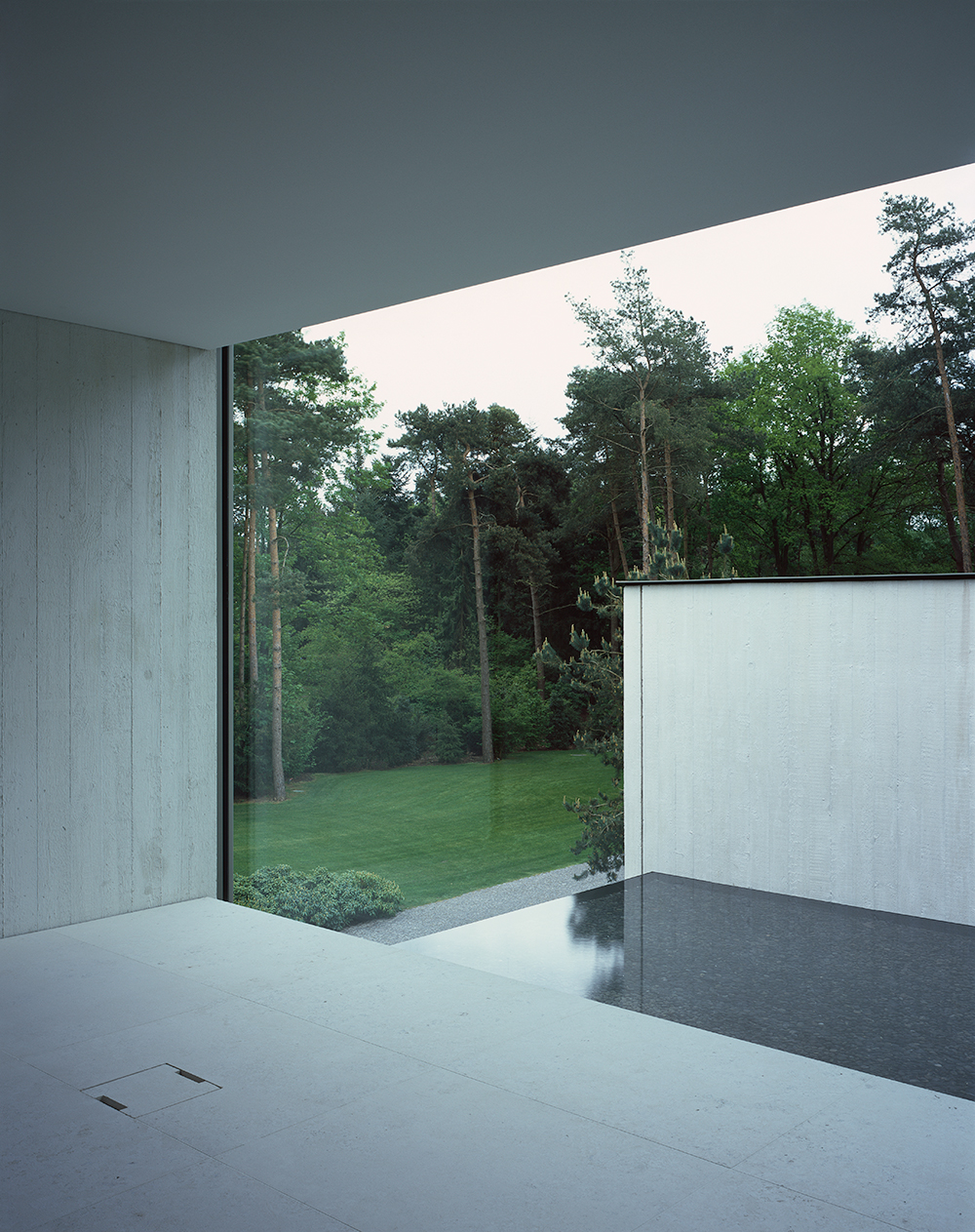
The view from the first floor gallery space across a reflecting pond.
The concrete house is a calm symphony of stacking, interlocking rectangles, and Jones' key organising device was the frame. 'The house is about creating and capturing views of the landscape – it's an architecture of connected spaces rather than rooms,' he says. The architect cites a few inspirations, notably Marcel Breuer's own house in Massachusetts, the archetypal modernist 'volume resting on a landscape'. Other references are more explicit, like the private enclosure on the ground floor that deliberately evokes the form and scale of the Barcelona Pavilion courtyard, while the reflecting pools scattered around the plan are carefully placed to enhance the views.
Those views are also shaped by the material choices. The surrounding forest inspired the decision to use shuttered concrete, and once the countless tons of sand had been removed, washed and sold in accordance with Dutch building regulations, over 4,000 tons of concrete was poured and the house took shape. The concrete was enriched with titanium dioxide, giving it a chalky white hue and making it almost completely impervious to water, even in the basement pool. It's also a perfect colour match for the Jura limestone flooring used throughout. Ceilings are finished in a special spray-on mix of crushed recycled glass and marble, while every bath, sink, fireplace and kitchen counter was carved from a single block of Statuario marble, carefully selected after several visits to the Italian quarry. 'There are effectively no painted finishes in the whole house,' says Jones. At every turn, detail is indulged, such as the kitchen joinery sharing the same 150mm wide boards and type of wood used in the shuttering (although rough-cut Russian fir boards were needed to get just the right quality of grain for the concrete). The structure was overseen by Arup Amsterdam, resulting in what Jones calls 'very pure engineering'.
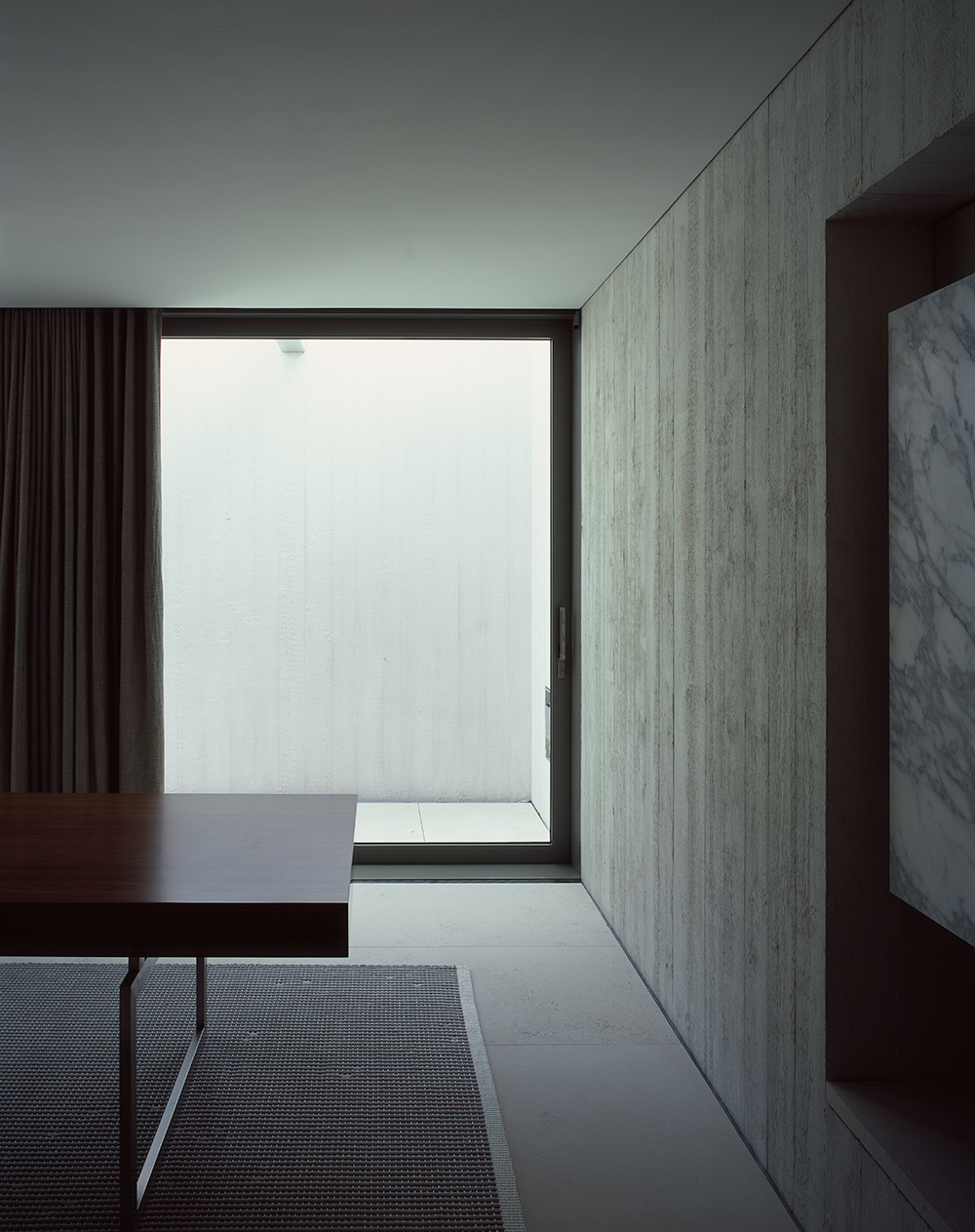
The view from the first floor gallery space across the ground floor study.
The massive complexity of a modern house hides under the skin. A two-storey plant room controls the 130 sq m of photovoltaic cells on the flat roof and the 16 bore holes that provide ground source heat, while fixtures and fittings, like lighting, speakers and tablet control, are all discreetly concealed. The material concerns of both client and architect are evident in the way everything has been put together. 'I don't continue to build in one material all the time,' says Jones. 'I work with materials that are appropriate for each situation.' The villa took eight years from start to finish, far longer than Jones' usual projects, which include houses in Portugal and New Zealand and his own in Highgate, London. The result honours the site and celebrates not just craft but Dutch pragmatism as well. 'The client didn't care that we were just a small office working out of London. It's not pretentious – it's a large but very humble home to live in.'§
As originally featured in the April 2015 issue of Wallpaper* (W*193)
INFORMATION
For more information, visit Russell Jones’ website
Receive our daily digest of inspiration, escapism and design stories from around the world direct to your inbox.
Jonathan Bell has written for Wallpaper* magazine since 1999, covering everything from architecture and transport design to books, tech and graphic design. He is now the magazine’s Transport and Technology Editor. Jonathan has written and edited 15 books, including Concept Car Design, 21st Century House, and The New Modern House. He is also the host of Wallpaper’s first podcast.
-
 Broken up into six pavilions, this brutalist Mexican house is embedded in the landscape
Broken up into six pavilions, this brutalist Mexican house is embedded in the landscapeSordo Madaleno’s brutalist Mexican house, Rancho del Bosque, is divided up into a series of pavilions to preserve the character of its hillside site, combining concrete, curves and far-reaching views
-
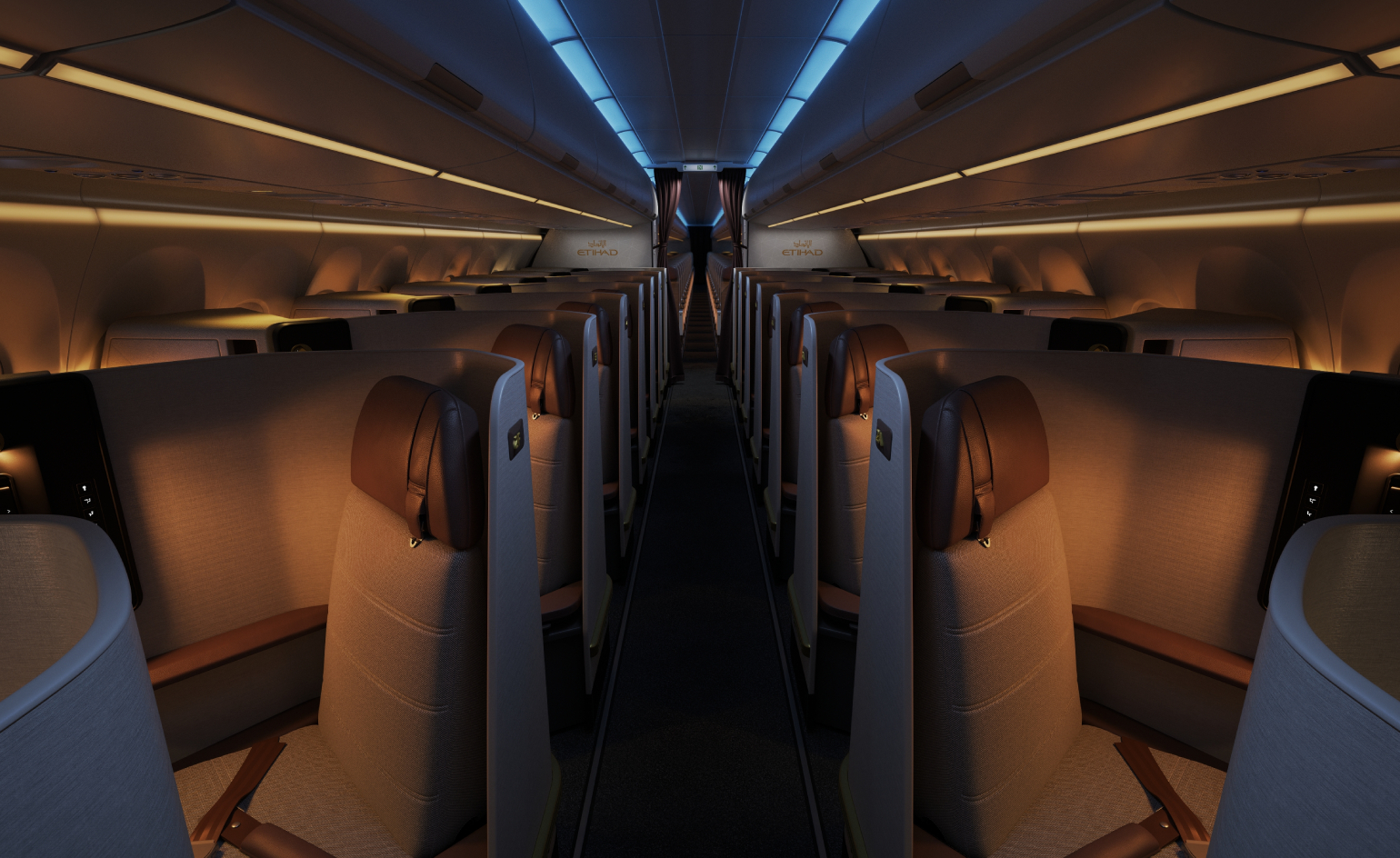 Etihad Airways’ A321LR redefines the single-aisle experience
Etihad Airways’ A321LR redefines the single-aisle experienceAbu Dhabi’s flagship carrier brings wide-body sensibility to its new generation Airbus aircraft, a rethink of what short and medium-haul travel can feel like
-
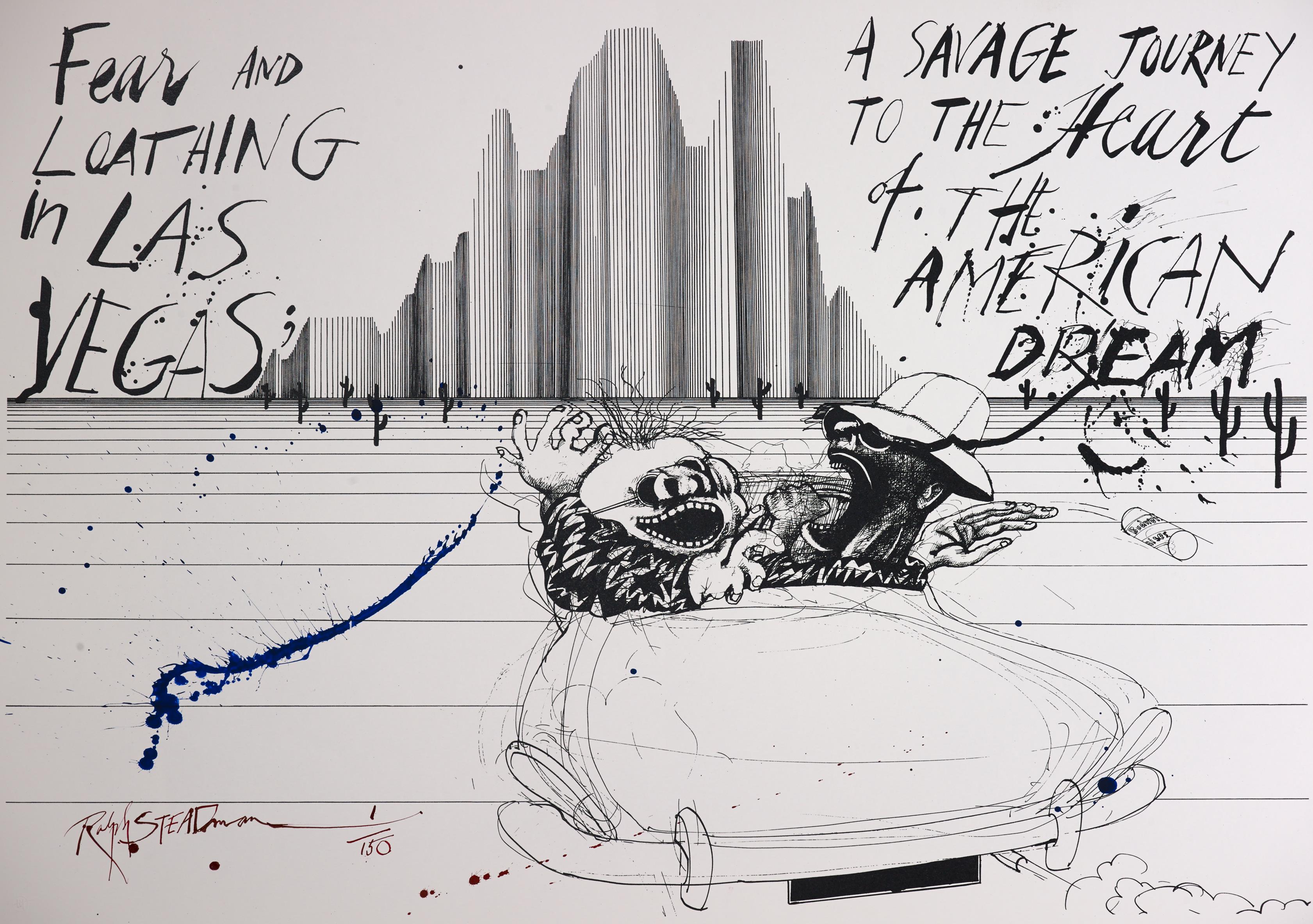 Ralph Steadman has worked with everyone from Hunter S. Thompson to Travis Scott and Quavo – now, the Gonzo illustrator is celebrated in London
Ralph Steadman has worked with everyone from Hunter S. Thompson to Travis Scott and Quavo – now, the Gonzo illustrator is celebrated in LondonA new exhibition provides a rare opportunity to experience the inimitable work and creativity of Gonzo illustrator Ralph Steadman up close. Just don’t call it a ‘style’.
-
 The new 2025 London Open House Festival tours to book
The new 2025 London Open House Festival tours to book2025 London Open House launches this weekend, running 13-21 September; here, we celebrate the newcomers in the residential realm, flagging the exciting additions to the festival's growing home tour programme
-
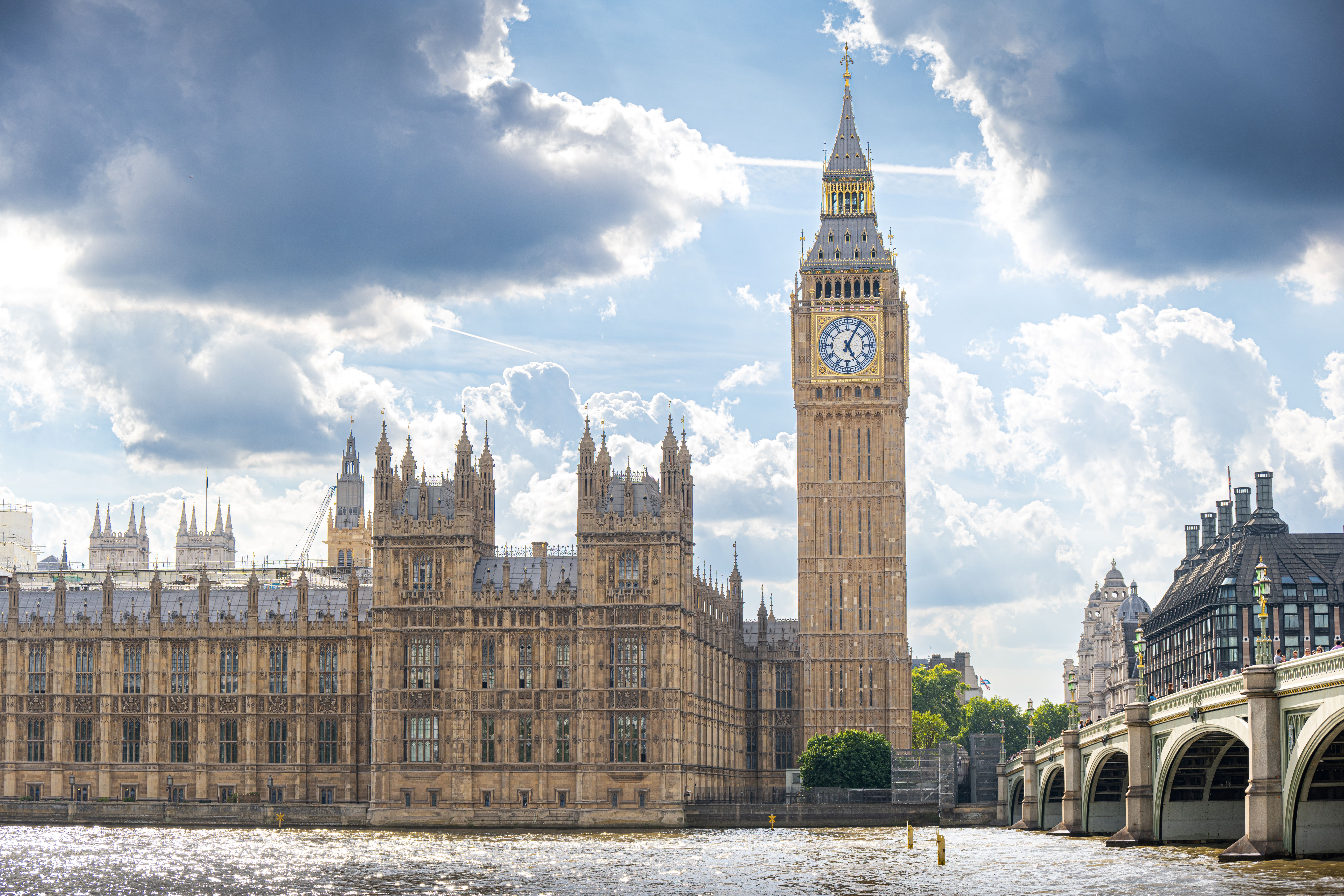 The wait is over – the RIBA Stirling Prize 2025 shortlist is here
The wait is over – the RIBA Stirling Prize 2025 shortlist is hereThe restored home of Big Ben, creative housing for different needs, and a centre for medical innovation – the RIBA Stirling Prize 2025 shortlist has just been announced, and its six entries are as diverse as they can be
-
 Slides, clouds and a box of presents: it’s the Dulwich Picture Gallery’s quirky new pavilion
Slides, clouds and a box of presents: it’s the Dulwich Picture Gallery’s quirky new pavilionAt the Dulwich Picture Gallery in south London, ArtPlay Pavilion by Carmody Groarke and a rich Sculpture Garden open, fusing culture and fun for young audiences
-
 Bay House brings restrained modern forms and low-energy design to the Devon coast
Bay House brings restrained modern forms and low-energy design to the Devon coastA house with heart, McLean Quinlan’s Bay House is a sizeable seaside property that works with the landscape to mitigate impact and maximise views of the sea
-
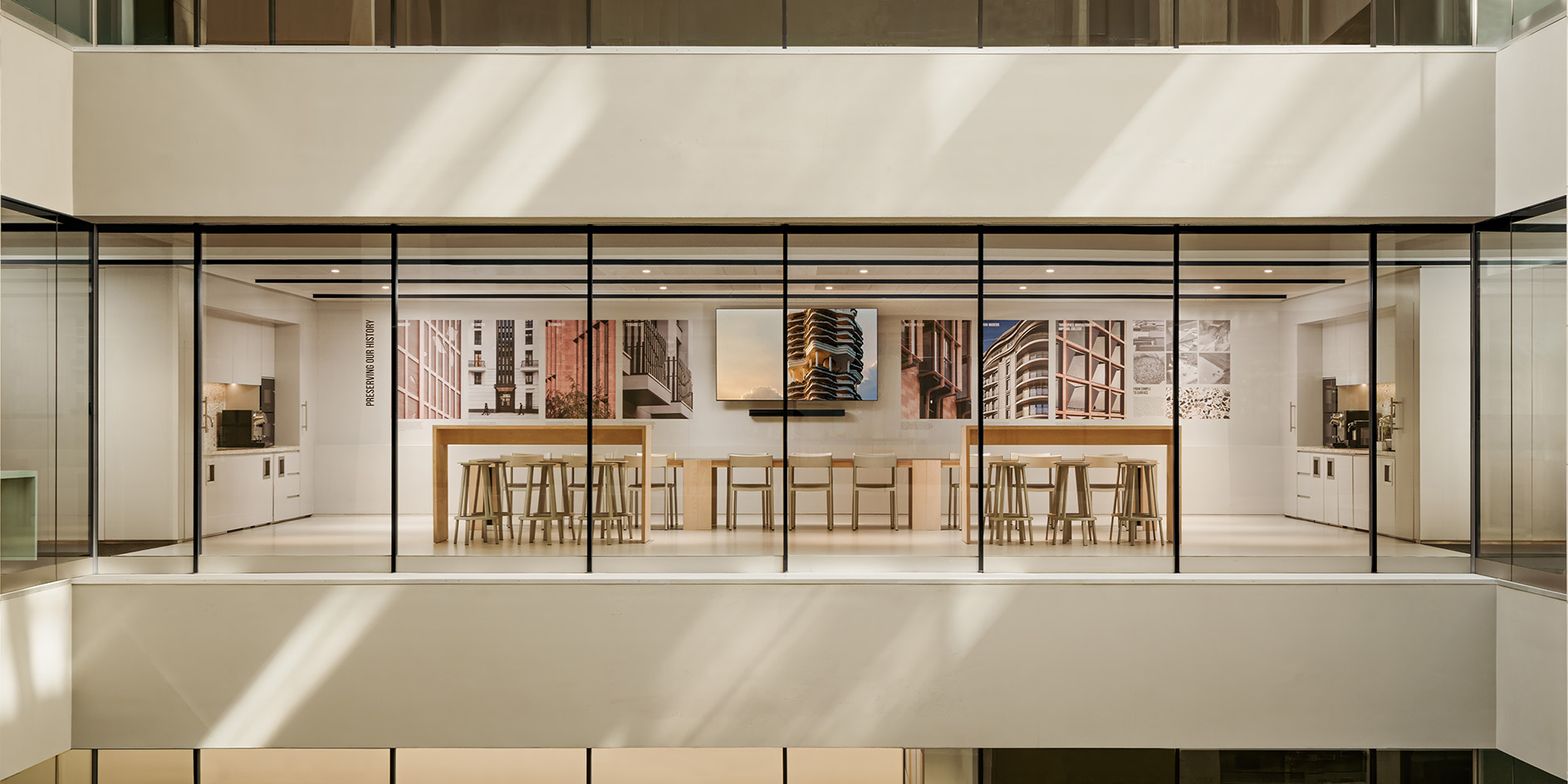 A whopping 92% of this slick London office fit-out came from reused materials
A whopping 92% of this slick London office fit-out came from reused materialsCould PLP Architecture's new workspace provide a new model for circularity?
-
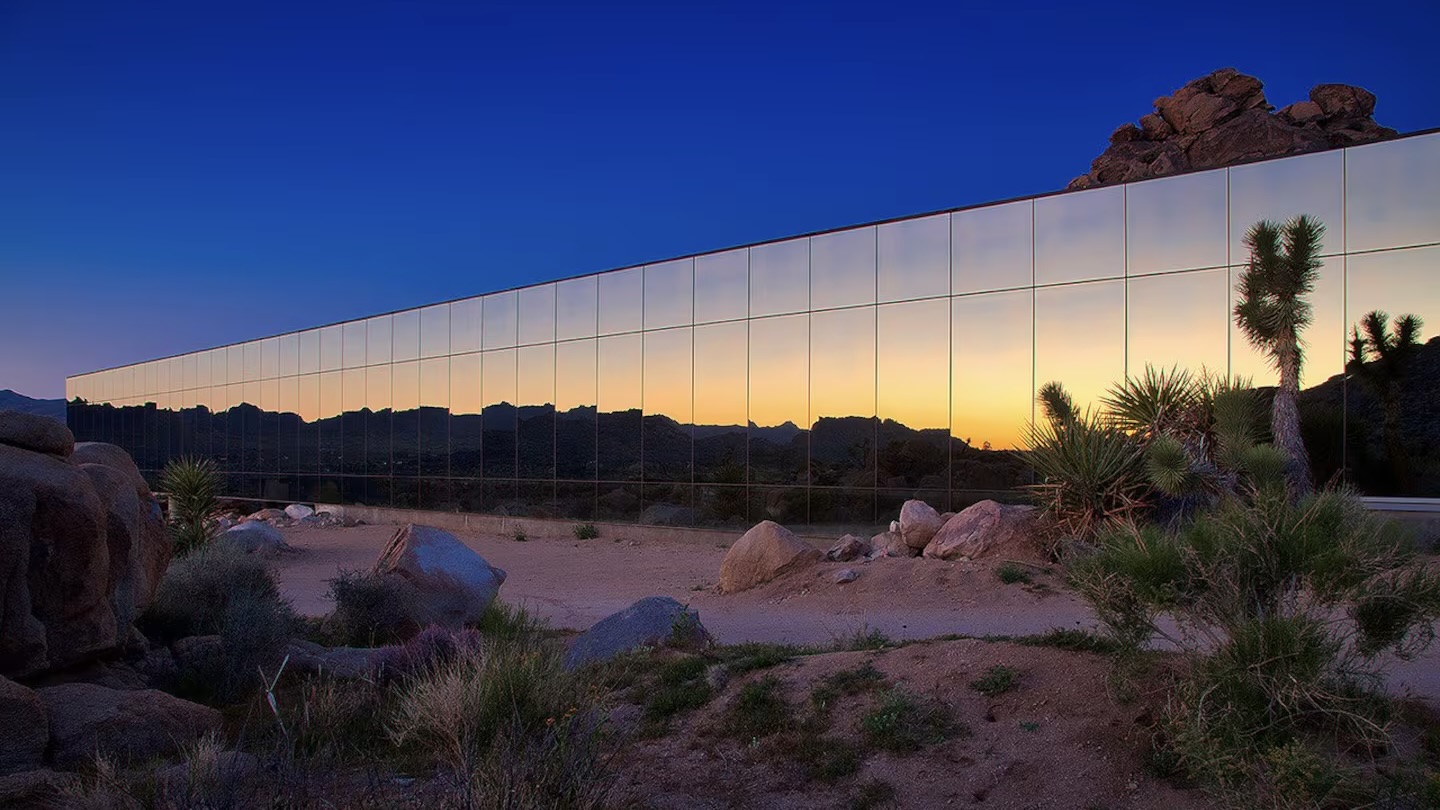 The best of California desert architecture, from midcentury gems to mirrored dwellings
The best of California desert architecture, from midcentury gems to mirrored dwellingsWhile architecture has long employed strategies to cool buildings in arid environments, California desert architecture developed its own distinct identity –giving rise, notably, to a wave of iconic midcentury designs
-
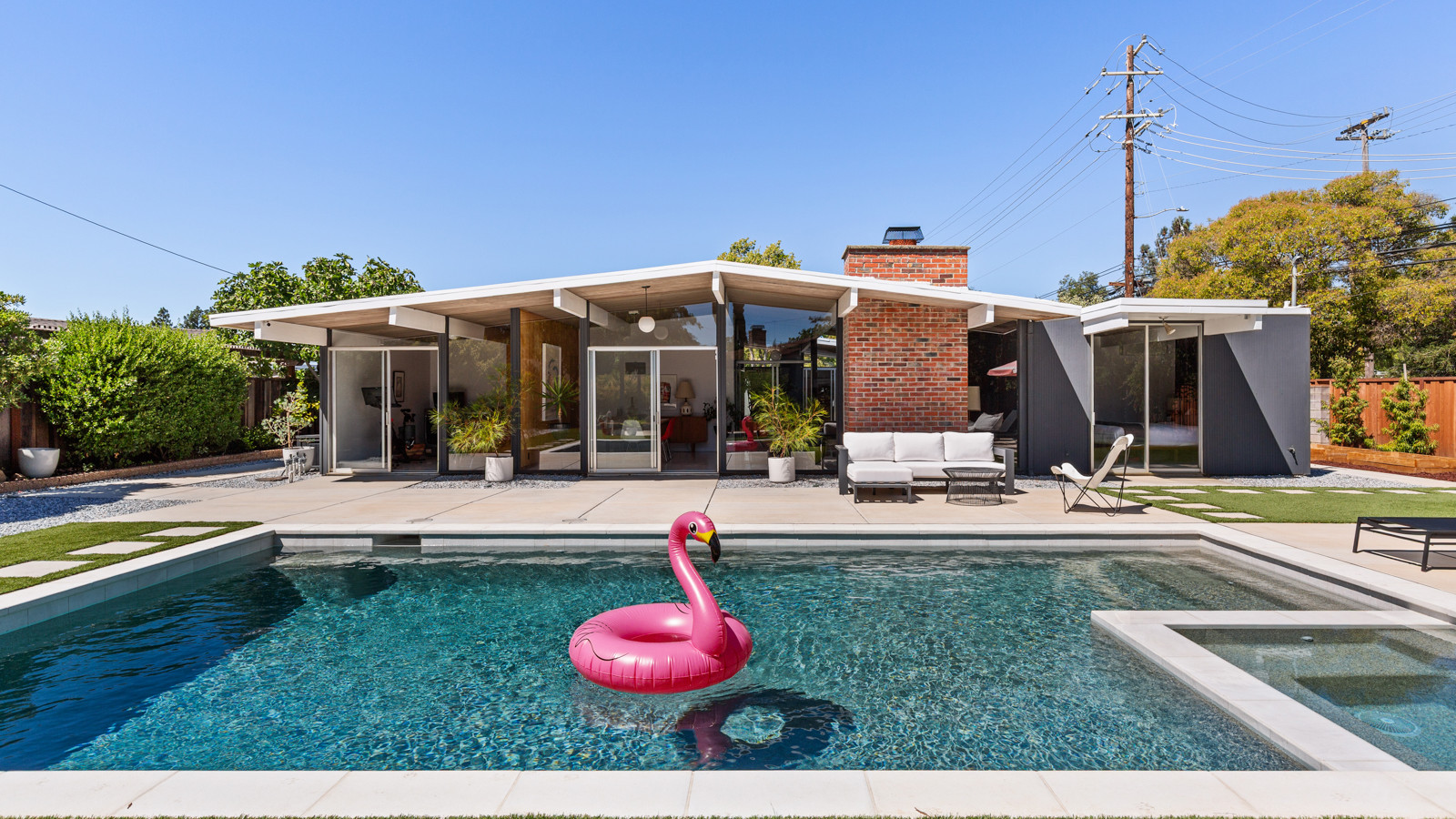 A restored Eichler home is a peerless piece of West Coast midcentury modernism
A restored Eichler home is a peerless piece of West Coast midcentury modernismWe explore an Eichler home, and Californian developer Joseph Eichler’s legacy of design, as a fine example of his progressive house-building programme hits the market
-
 The Architecture Edit: Wallpaper’s houses of the month
The Architecture Edit: Wallpaper’s houses of the monthWallpaper* has spotlighted an array of remarkable architecture in the past month – from a pink desert home to structures that appears to float above the ground. These are the houses and buildings that most captured our attention in August 2025